Brita-filtered water @ 100C in 12cl shengpu pot; ~8-9g leaf; 1 rinse
Dry leaf:
Tight compression. The leaves are apparently from Hekai Village, in Menghai County. The product page claims that it is made from 2-leaves-1-bud systems, and while quite a few can be discerned, it is mostly filler leaf. The aroma is sweet and dark, very strong, and exceedingly pleasant. What a perfume!
3s, 5s, 7s, 9s, 12s:
A dark-gold soup. The tips impart a certain smoothness to the texture which is absent in the other cakes.
This cakes starts out muted and low, with a straight, honest pu'er flavour that I rather enjoy. Later infusions see the sweetness increase, to the point where it is tasting like a rustic honey. A touch of citrus lives about the edge, and the yunxiang [aroma after swallowing] is buttery, akin to gaoshan wulong.
By the fifth infusion, the tea has turned a corner, and fades rapidly (though in a controlled fashion).
Wet leaf:
Mulch, with some spring tips. A few dark leaves, must mostly a sea of bitty, green fragments.
Overall:
Not as much to my liking as the 8582, it is fairly decent. This is definitely Division Two tea, compared to the quality of leaves used in the expensive pair of cakes. Rough honey, tangy, quite enjoyable. It's one of those rustic, tobacco-esque numbers. I quite enjoyed the rolling huigan, too.
Addendum
August, 2013
This seems to be yet another cake that I have not tried since buying it. I recall being anxious about spending what was then £23 on a cake. These days, even the most basic would cost around that price.
It is dark, now, and has a delightfully low and rich aroma. Zidu [purple belly], my teapot, gleams in anticipation. The scent really is rather delicious. The small, fragmented leaves appear most appealing.
The dragon-and-phoenix motif usually signifies the coming together of two opposing principles - typically the masculine and feminine, hence its frequent use as a symbol of matrimony. In tea, it can refer to a blend of two very different, but hopefully complementary, regions. I suspect that the cake may have aged to the point at which identification of its components will be a difficult task.
Strong, becoming orange, and woody-sweet as with many of my English-stored cakes, this bing is travelling in the right direction. I take the second cup to my dear wife, who is gardening, and who stops to enjoy it with a complimentary sound.
The long sweetness folds into the kuwei [good bitterness] in the throat that keeps this tea interesting - and satisfying. It endures very well; I wrote previously that it could manage only five infusions, whereas it now steams past five while remaining solidly sweet. It is something of a success, for such a low price.
The long sweetness folds into the kuwei [good bitterness] in the throat that keeps this tea interesting - and satisfying. It endures very well; I wrote previously that it could manage only five infusions, whereas it now steams past five while remaining solidly sweet. It is something of a success, for such a low price.
Addendum
August, 2018
Another five years has passed!
I read the above article and weep figurative tears at remembering the days when £23 was considered by me to be a serious amount of money to spend on tea. Twenty three! £23 in 2007 is, adjusted for inflation, £28 in 2018.
This article is not going to be smugly lauding prices of yesteryear over you, Gentle Reader. The pain of modern pricing is ubiquitous - it is felt by all.
The sweetest irony is that when prices were low, I was a humble graduate student on the tightest of budgets. I'd been married a year, and was saving hard for a house - spending £23 on tea was an adventure! If only, if only, I'd been making the proverbial bank back then. But such is life!
This cake is a fascination: it was bought back when it was created, and has since been stored in my home, here in little old Oxford. It is the product of Oxford storage! But is it any good?
I was worried, as surely are we all, that the Western domestic circumstances in which the cake found itself for the past 11 years might cause cakes not to age well, or, at worst, to ruin them completely. It rarely gets hot in England (although, at the time of writing, we are in a heatwave that exceeds, oddly enough, the temperature of the Pacific island on which I've just spent some time). It is, however, really wet here.
If you check out the "musings" page, you'll find a few entries under "English storage", the last of which appears to have been written five years ago. Now a half-decade later, the effects of English storage, and Oxford storage in particular, are becoming more clear.
Teas age slowly here, but they seem to age well. At least, they are neither dying/sleeping, nor becoming sour, as far as I can tell. This must be the contribution of the humidity, for surely dryness is the enemy of pu'ercha. The long time-constants involved are, I speculate, due to the cooler temperatures that we experience, when compared with the tropical regions in which pu'ercha is more usually stored.
This particular XZH, for example, is pretty good now! When it was new, it was "division two", as I noted above. These days, while its "non-premium" quality can be discerned, it is much more enjoyable than once it was.
I perform an unbiased sample by asking my dear wife to try a cup, without telling her what she's drinking. This is a rather hard test, because she tends to be quite averse to raw tea. "This is good! There's nothing bad in it at all!" she observes.
Indeed, there is nothing bad in it at all, I believe. The sweetness is very long indeed, testifying to the clean manner of the processing, while them there huigans are present in abundance. I enjoy the low, rounded character of a tea that has entered its middle age.
I imagine that, were this cake to be stored in Guangzhou or Malaysia, it would be very much darker by now. However, I live where I do, and must live with the consequences - in pu'ercha, while not accelerating towards deep red characteristics, it has moved nicely away from its green youth. I am pleasantly relieved!

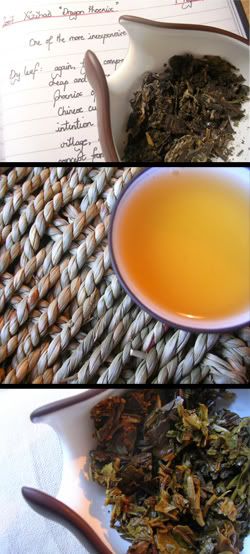

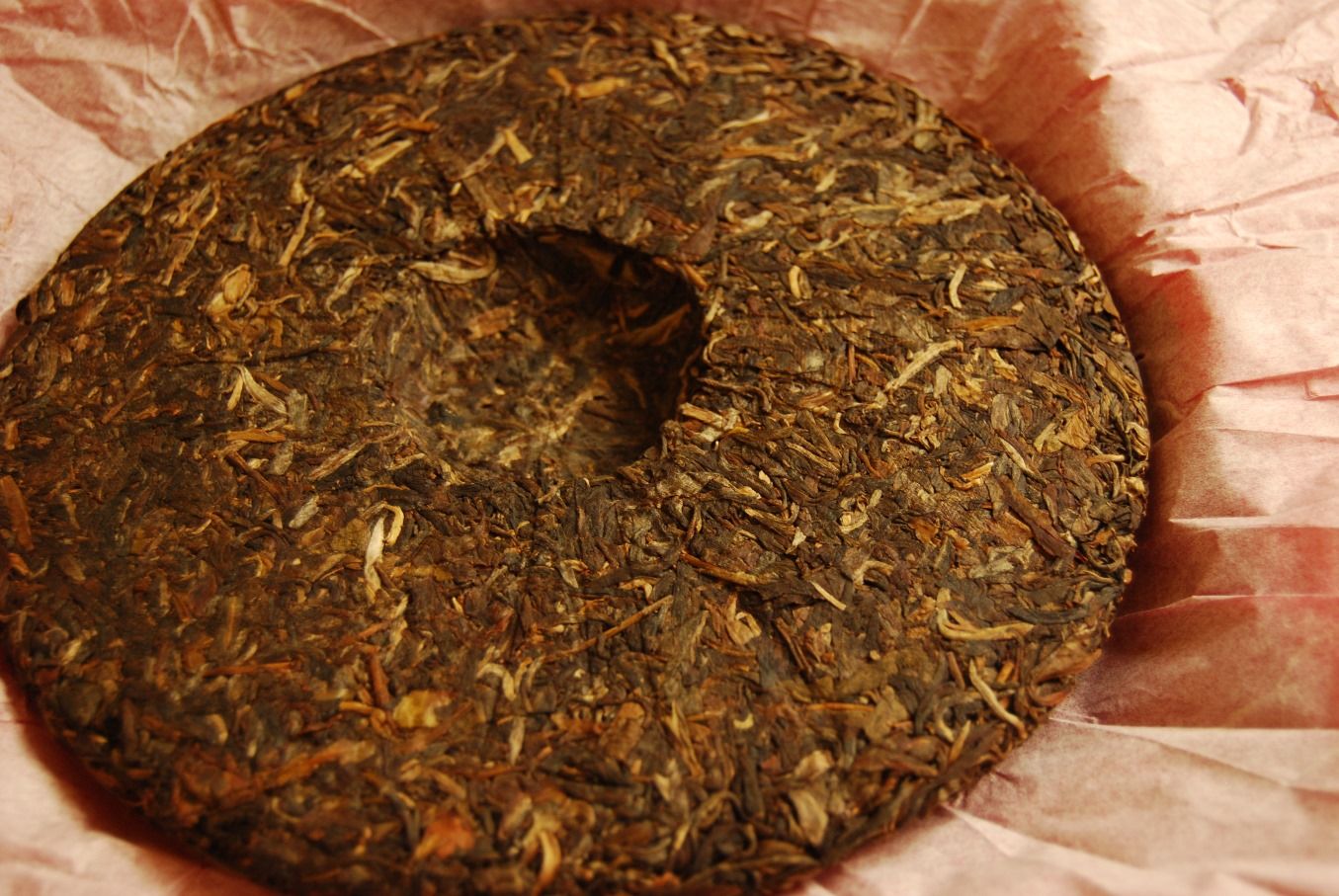
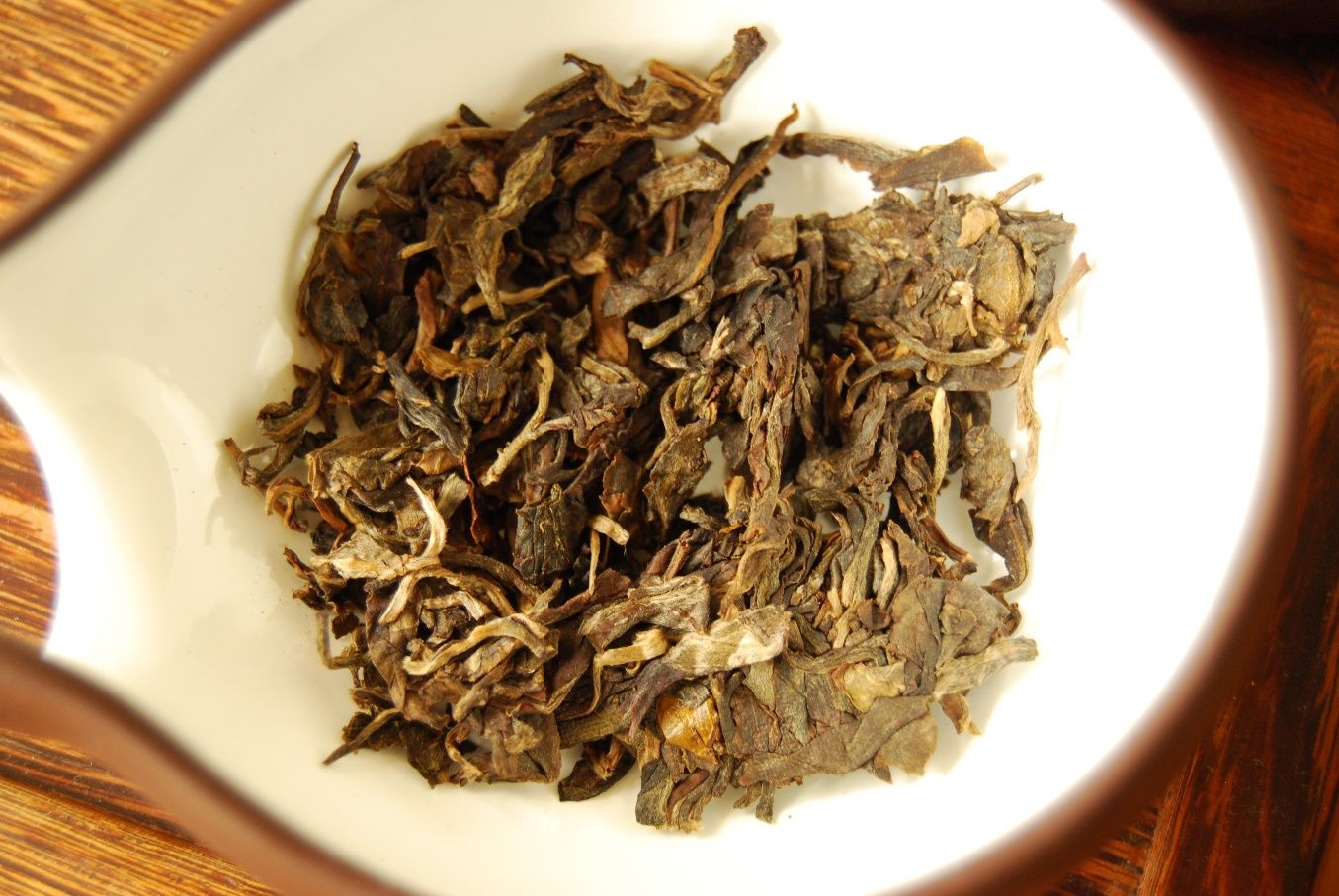
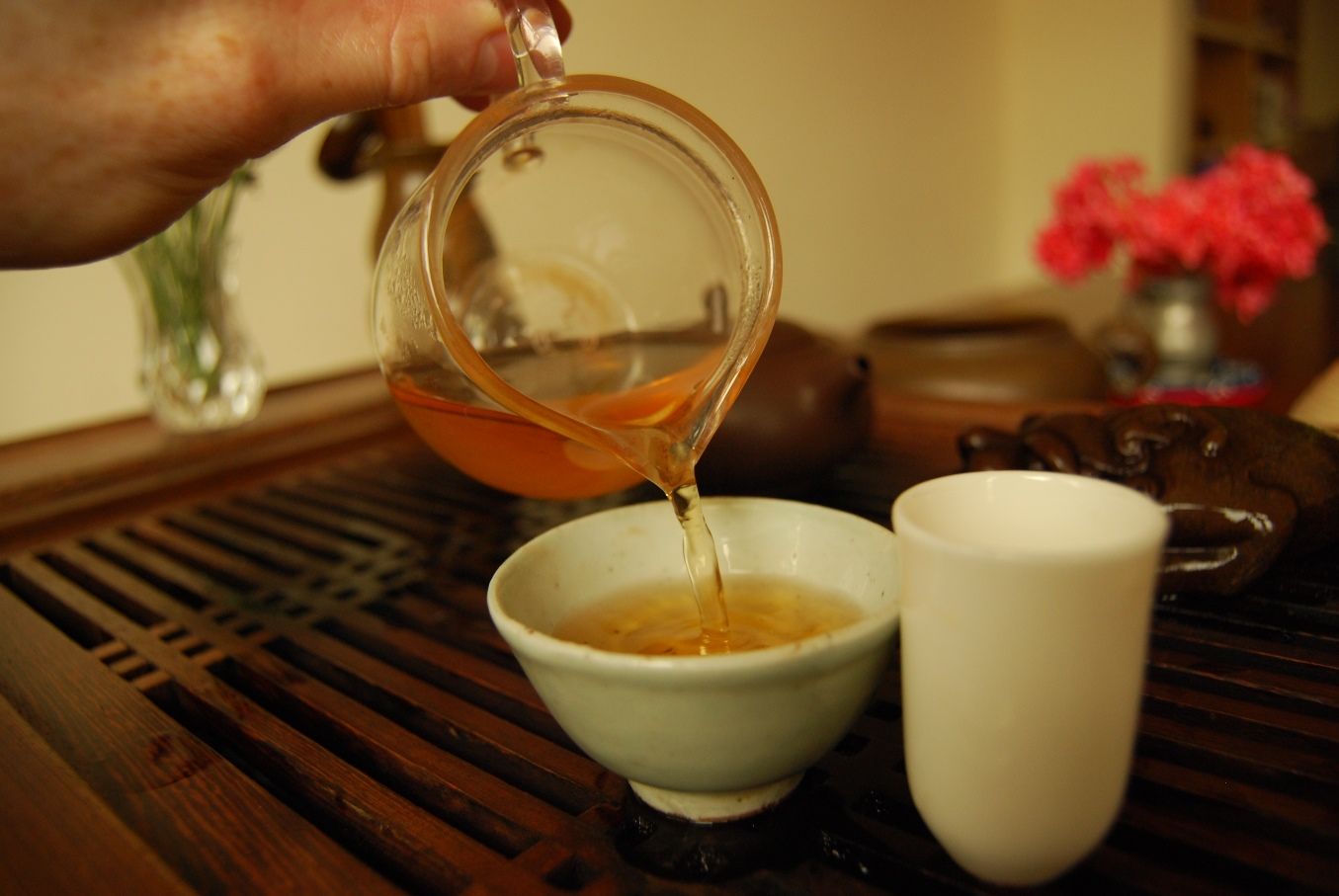
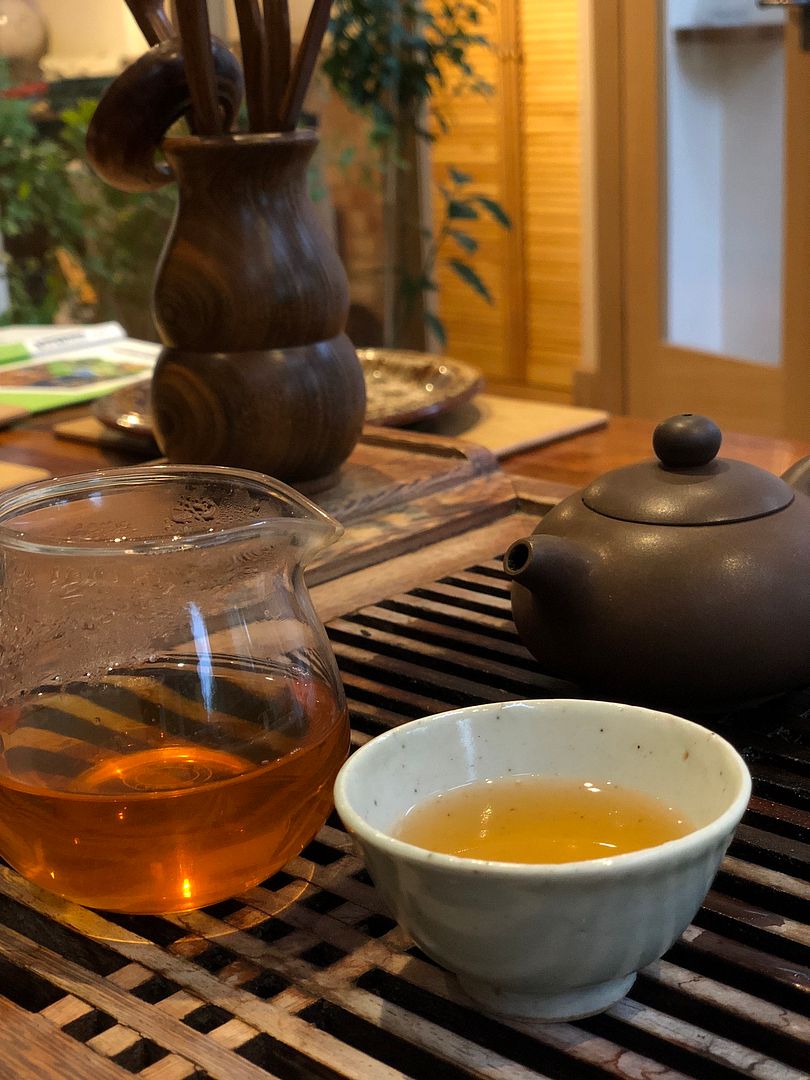
5 comments:
David, I’d like to think the use of LongFeng is intentional. I have; boy and girl twins, they are often referred to as; Dragon and Phoenix. As I encounter the use of “longfeng” it tends to a purposeful usage, not frivolous. I’ll check with my local tea aficionados and see what they say …john
Well, boy and girl twins are by definition Longfeng -- that's what we call them, longfeng tai (the longfeng birth). There isn't another term for it, afaik.
hi!
i wish to subscribe to your blog.
can you help me do that please.
regards
ankit
www.xanga.com/lochantea
Dear John,
I look forward to hearing what the teafolks there have to say on Longfeng - I wonder if it's the tips vs. mulch duality.
Toodlepip,
Hobbes
Dear Mr. Lochan,
Thanks for reading. As for subscribing to the blog, it uses the standard Blogger RSS feed - so you should just be able to take your blog-reading program (such as Google Reader) and input the normal web-site address http://half-dipper.blogspot.com. Do let me know if you have any problem with it.
Kind regards, and toodlepip,
Hobbes
Post a Comment